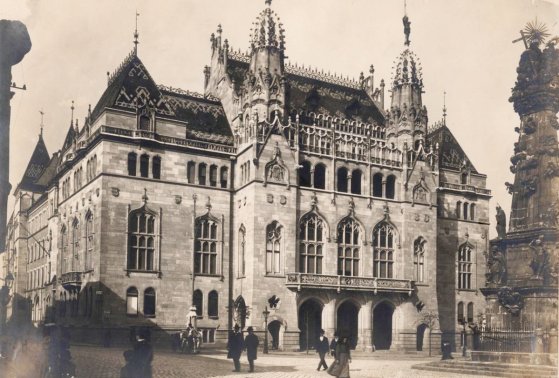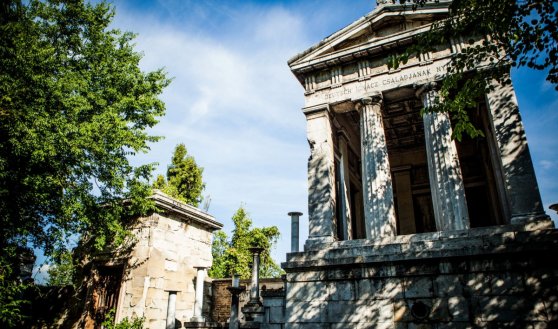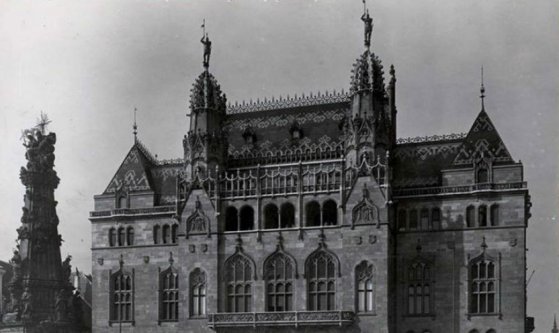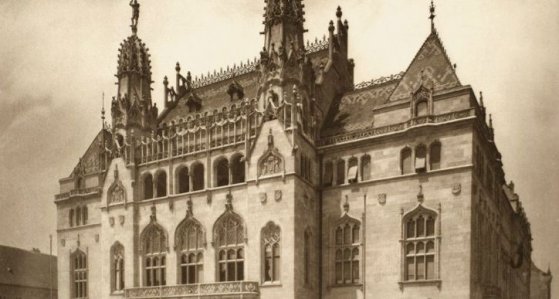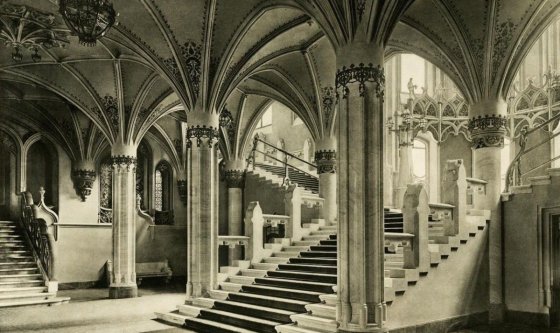 The „intertwined history” of the bridges and the city of Budapest
Which ideas and events have shaped the fate of bridges of Budapest and the cityscape? Alongside many other interesting facts, this question is also answered this newly published book by the Budapest City Archives, which introduces the history of bridges in Budapest.
The „intertwined history” of the bridges and the city of Budapest
Which ideas and events have shaped the fate of bridges of Budapest and the cityscape? Alongside many other interesting facts, this question is also answered this newly published book by the Budapest City Archives, which introduces the history of bridges in Budapest.
Sándor Fellner
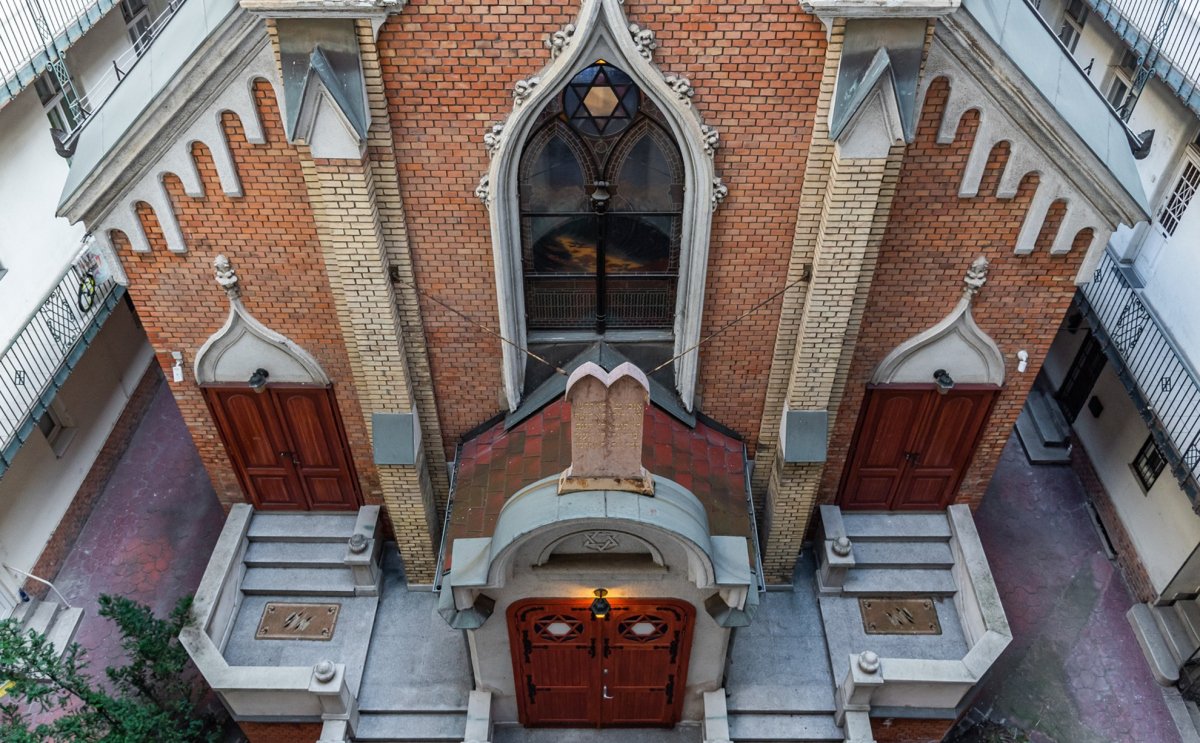 The foundation stone of the synagogue in Újlak was laid 135 years ago
The foundation stone of the synagogue in Újlak was laid 135 years ago
October 16, 2022 at 2:00 PM
When the synagogue on Frankel Leó Road - then Zsigmond Street - was built, it was referred to as the Jewish church in Újlak. Its designer was Sándor Fellner, the creator of the Ministry of Finance in Buda Castle. The synagogue in the 2nd District is no longer seen as it was at the time of its construction since it has since been surrounded by a residential building.
The Palace of the Ministry of Finance was completed 115 years ago
October 7, 2022 at 9:00 AM
It is lesser known that on 7 October 1907, the construction works of the Ministry of Finance's Szentháromság Square palace were completed. The significant construction work took place between October 1901 and December 1904, but the post-construction work continued until October 1907. And several pivotal dates are connected to the construction itself.
Secrets of the Salgótarjáni Street Jewish Cemetery
August 26, 2022 at 6:30 PM
One of the most unique cemeteries in Hungary, the Salgótarjáni Street Jewish Cemetery in Budapest was opened in 1874, adjacent to today's Fiumei Street Cemetery. Many grave monuments combine elements of Jewish symbols and Hungarian folk motifs. Most of the mausoleums serving as the final resting place of the elite of Pest's Jews were designed by Sándor Fellner and Zsigmond Quittner. Anyone can see them on 4 September.
French, Italian, German, Hungarian - The Royal Hungarian Ministry of Finance and its European counterparts
June 28, 2022 at 9:00 AM
Hungarian folk art played a major role in the magical interiors of the Szentháromság Square palace of the Hungarian Royal Ministry of Finance. Because at the time of its construction - at the very beginning of the 20th century - the national sentiment was on fire in our country, which was expressed in the language of architecture by reviving the people's ancient decorative motifs. A Ministry of Finance is an important institution in every country, but is the spirit of the given nation reflected on the walls elsewhere? By presenting some European examples, we are looking for the answer to whether this type of building was built based on this concept elsewhere.
The decorators of the palace built for the Ministry of Finance
November 5, 2020 at 9:00 AM
Passers-by are often in awe of the stunning decorations and ornaments that characterise the era of historicism. The palace of the Ministry of Finance on Szentháromság Square is another building on which several masters worked, take a look at their work.
The Gothic-Revival wonders of Budapest
August 6, 2020 at 9:00 AM
The image of Budapest today is defined by a prolific period, the architecture of dualism. The most famous buildings of the capital, such as the Fisherman's Bastion, the Opera House, the Parliament and Saint Stephen's Basilica, were built in the second half of the 19th century. This period is characterized by a high degree of stylistic pluralism. Join PestBuda on a walk through the most stunning buildings in Budapest.
More articles
 The „intertwined history” of the bridges and the city of Budapest
Which ideas and events have shaped the fate of bridges of Budapest and the cityscape? Alongside many other interesting facts, this question is also answered this newly published book by the Budapest City Archives, which introduces the history of bridges in Budapest.
The „intertwined history” of the bridges and the city of Budapest
Which ideas and events have shaped the fate of bridges of Budapest and the cityscape? Alongside many other interesting facts, this question is also answered this newly published book by the Budapest City Archives, which introduces the history of bridges in Budapest.
 The Bridge Report, which brought a turning point in the history of Budapest
A travel report that changed the history of Pest and Buda, as well as Hungary. The little book contributed to the change of half a thousand years of legal customs and the implementation of an investment of unprecedented size and technical quality. This book was The Bridge Report [Hídjelentés in Hungarian].
The Bridge Report, which brought a turning point in the history of Budapest
A travel report that changed the history of Pest and Buda, as well as Hungary. The little book contributed to the change of half a thousand years of legal customs and the implementation of an investment of unprecedented size and technical quality. This book was The Bridge Report [Hídjelentés in Hungarian].
 Drama on the university wall - The heroic monument was planned 95 years ago
In the constant hustle and bustle of the Egyetem Square in Pest, the students may not even notice the monument that decorates the short section of wall between the church and the central building of ELTE. However, it commemorates their predecessors, the heroes who fought for their country in World War I, and those who heroically helped them. The first design of the dramatically collapsing soldier was born in 1928, ninety-five years ago.
Drama on the university wall - The heroic monument was planned 95 years ago
In the constant hustle and bustle of the Egyetem Square in Pest, the students may not even notice the monument that decorates the short section of wall between the church and the central building of ELTE. However, it commemorates their predecessors, the heroes who fought for their country in World War I, and those who heroically helped them. The first design of the dramatically collapsing soldier was born in 1928, ninety-five years ago.

